Why Does My Electric Stove Take So Long to Boil Water? (Normal Times)
Boiling water on an electric stove shouldn’t take forever. But if you are in a hurry, it can certainly seem like it is taking a long time – too long, in fact.
Electric stoves take longer to boil water than gas ranges because they are less efficient at transferring heat to the pot and the water inside. An electric stove will boil water more slowly if you don’t use the maximum setting or use an eye too small for your pot. Gas ranges will boil water fastest, electric coil ranges will boil water second-fastest, and ceramic or glass-top electric ranges will boil water the slowest.
Instead of a direct flame like gas stoves, electric burners rely on electricity to heat up a heating coil or ceramic surface, which then transfers the heat to your pot or pan. This process inherently takes longer and can be exacerbated by the type of pot or pan you use. A heavy-bottomed pot evenly distributes heat, and while this is desired for certain dishes, it may extend the boiling time for water.
Keep in mind that the speed at which water will boil on an electric stovetop also depends on the amount of water involved. Boiling a cup of water for your tea will take much less time than boiling a gallon or two for spaghetti noodles.
How long does it take to boil water on an electric stove?
Based on my experience, electric stoves, including glass stove tops, should take about 6 to 10 minutes to boil one liter of water. Results will vary depending on your stove’s wattage, type of pan, elevation, and starting water temperature.
How to boil water faster on an electric stove
When using an electric stove in the kitchen, you might find that it takes longer to boil water compared to other heat sources, like gas stoves or induction cooktops. To speed up the heating process, consider these cooking tips to ensure efficient boiling without sacrificing quality.
Use the highest heat setting
Always use the highest setting of your burner when boiling water. Electric stoves heat up slowly, so turning up the heat in advance helps reduce the overall time it takes to bring the water to a boil.
Keep an eye on the stove, and once the water starts boiling, adjust your temperatures as needed to maintain a simmer or rapid boil, depending on your recipe requirements.
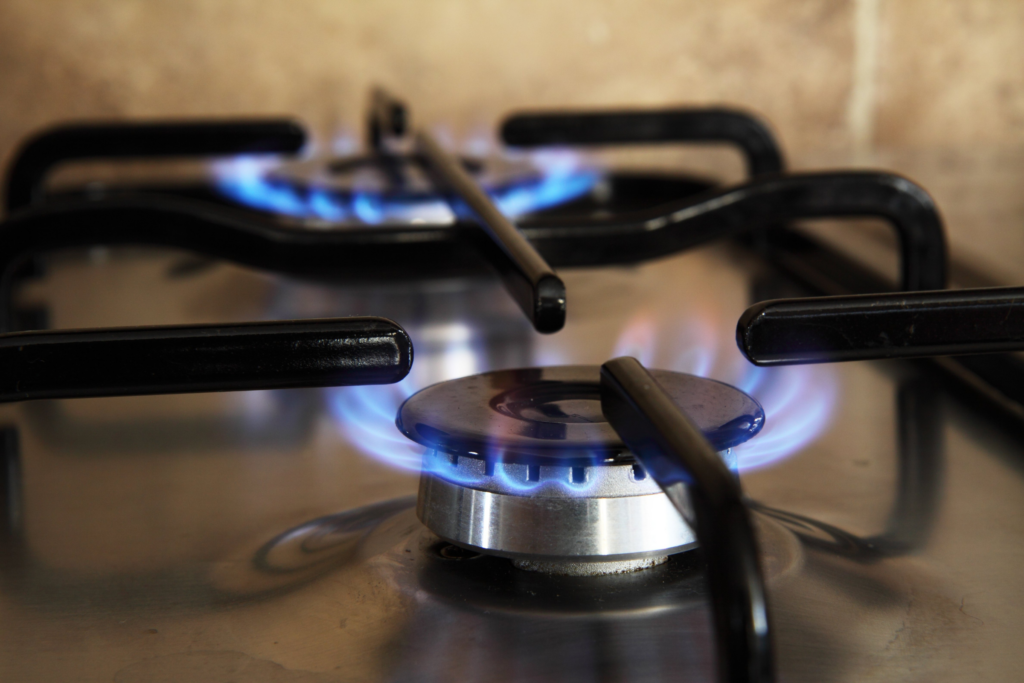
Start with hot tap water
When filling your pot with water for boiling, start by using hot tap water instead of cold. This way, the water is already at an elevated temperature before it even gets on the stove, shortening the overall time it takes to reach a boil.
Just be sure it’s safe to use your tap water for cooking purposes; otherwise, heat filtered water in a kettle first and then transfer it to the pot. Hot tap water can also contain trace minerals and metals from your hot water heater, a potential problem.
Use the right-sized pot
Choosing the right pot size is crucial for quicker boiling. Smaller pots and kettles with less water will naturally take less time to heat up and reach boiling point. Additionally, using a pot with a thick, even bottom promotes uniform heating and, subsequently, faster boiling.
Clean and maintain your electric cooktop
To improve the efficiency of your electric stove and shorten boiling times, consider taking the following steps:
- Keep your electric burner clean and free of debris
- Use energy-efficient pots and kettles made from materials with good heat conduction
- Ensure the interior surface of your pots is smooth and unblemished
- Preheat the burner for a few minutes before placing the pot on it
By keeping your electric stove in good condition and using the appropriate cookware, you can significantly reduce the time it takes to boil water and improve the overall efficiency of your appliance.
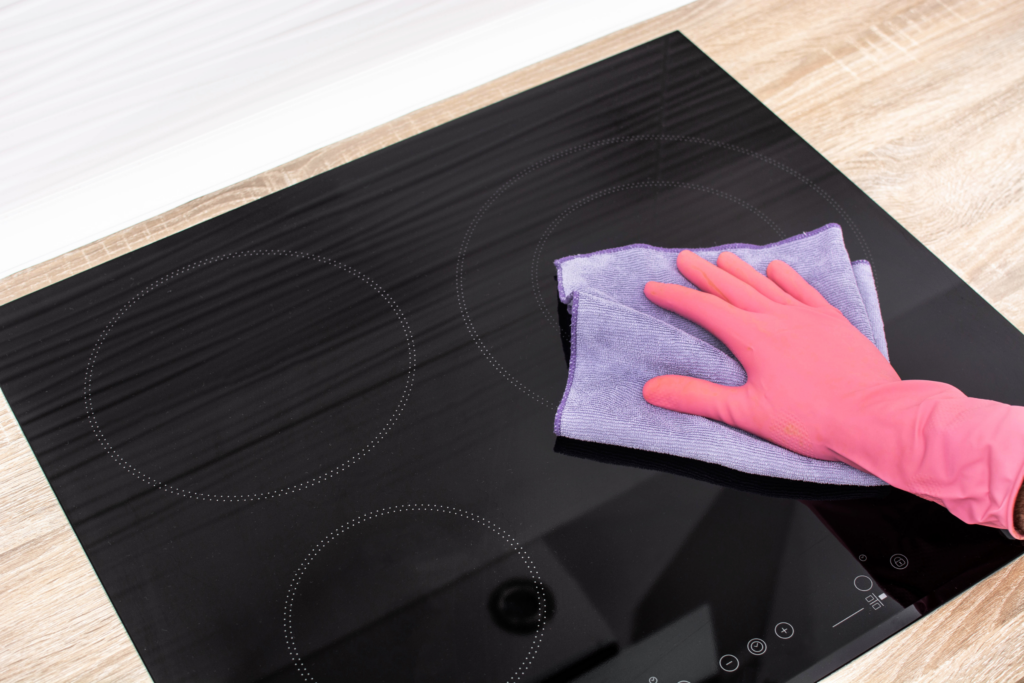
Typical electric stovetop range wattages
Here is a quick table explaining the differences between wattage on electric coil, glass top, or induction cooktops.
| Stovetop Type | Typical Wattage |
|---|---|
| Electric coils | 1250-2100 watts |
| Smooth top (glass or ceramic) | 1200-3000 watts |
| Induction heating | 1200-3600 watts |
Other factors Affecting Boiling Time on an Electric Stove
In this section, we will discuss the various factors that affect the boiling time on an electric stove. These factors include the:
- Burner size
- Temperature control
- Pot or kettle material type
- Pot or kettle size
- Lid or no lid
- Starting water temperature
- Altitude
Burner size
Burner size is a big factor that affects boiling time. The larger the burner, the more heat it can generate and transfer to the pot or kettle.
On the other hand, using a small burner with a large pot or kettle will not provide enough heat to boil water quickly. It is essential to match the size of the burner to the size of the cookware for optimal heating.
Temperature Control
Electric stoves can take longer to respond when adjusting the temperature. Unlike gas stoves that can instantly increase or decrease the heat output, electric heating elements need some time to warm up or cool down to reach the desired temperature settings.
This gradual change in temperature can result in a slower boiling process. To minimize this issue, pre-heat the burner to the maximum setting and then adjust the temperature as needed. Be cautious not to overheat the water, as this can cause safety hazards and potentially damage your cookware.

Pot or kettle material type
The material of your cookware plays a crucial role in how quickly water boils. Different materials have varying heat conduction properties, which affect how quickly they heat up and transfer heat to the water inside.
Here are some common pot and kettle materials:
- Stainless steel pots are a popular choice due to their efficient heat conduction and rapid heating capabilities. They also have the advantage of being durable and resistant to staining or discoloration.
- Aluminum pots are another option, known for being lightweight and having excellent heat conduction properties. However, they may be prone to warping and are not as durable as stainless steel.
- Copper pots are durable cookware known for their excellent heat conductivity and classic aesthetic appeal.
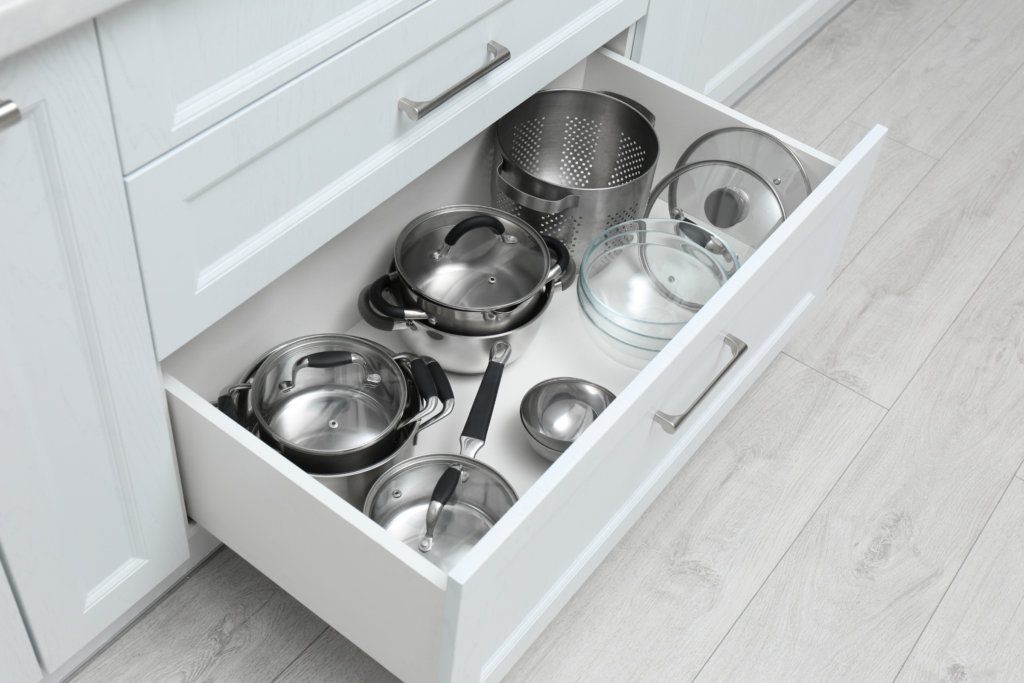
Pot or kettle size
Matching the size of your pot or kettle to the burner you’re using is vital for efficient boiling. Using a pot that is too large for the burner can result in uneven heating and longer boiling times.
Lid or no lid
Using a lid on your pot or kettle is an effective way to speed up the boiling process on your electric stove. A lid helps to trap heat and steam inside the pot, allowing the water to heat up more quickly. Ensure the lid fits well so that it can effectively retain the heat.
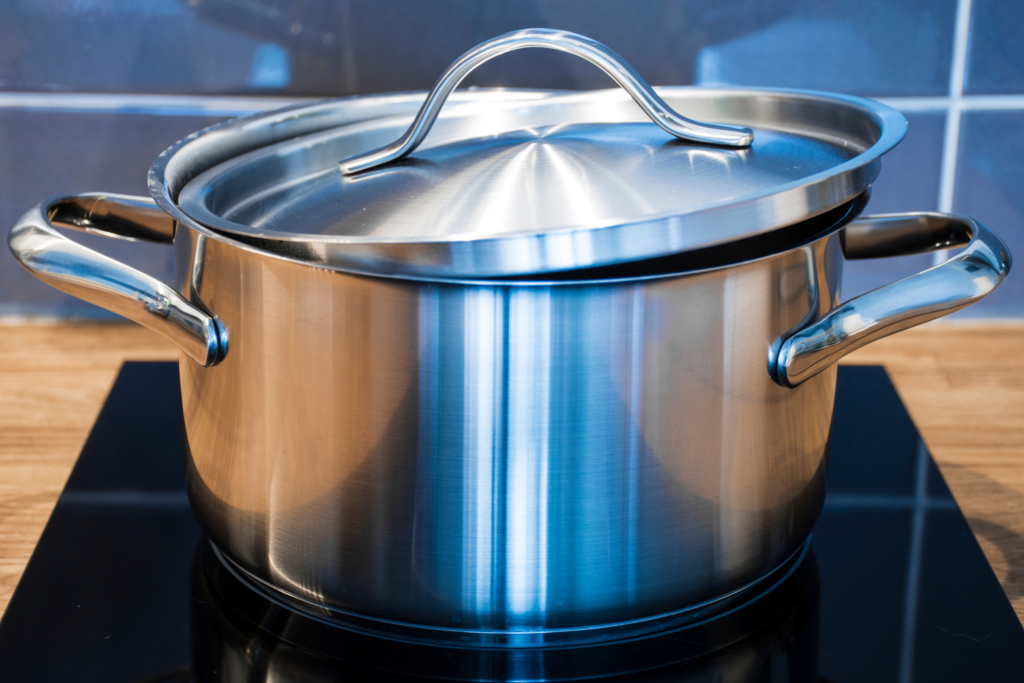
Starting water temperature
The temperature of the water you’re starting with plays a crucial role in how long it will take to boil. Cold tap water will take longer to reach boiling temperature than lukewarm water. Preheating your water in a kettle or microwave for a short period can speed up the process.
Altitude
The boiling temperature of water is 212°F (100°C) at sea level, but it decreases with an increase in altitude.
So, if you live in a high-altitude area, your water will reach a rolling boil at a lower temperature, which may affect the time it takes for your stove to bring the water to a boil.
Electric stoves vs gas stoves – a quick comparison
Gas stoves typically heat up quickly and can bring water to a boil in about 6-7 minutes. However, electric stoves, including glass top stoves, may take slightly longer, ranging from 6 to 10 minutes to boil one liter of water.
We’ve already explained that electric stoves are less efficient than gas, but why?
Let’s take a quick look at the three most important aspects:
- Heat conduction and energy transfer
- Heating power
Heat conduction and energy transfer
Electric stoves and gas stoves have different methods of heat conduction. Gas stoves use a flame, which heats the pot or pan directly and offers better heat distribution. This allows for faster and more even cooking.
On the other hand, electric stoves rely on an electric heating element that heats the cookware through direct contact. This process can be slower, as the heat transfer isn’t as efficient.
Heating power
Both electric and gas stoves have power ratings that indicate their heat output, but there is a big difference.
Electric stovetops measure power in watts because that is how you measure electric power in any application. As a general rule of thumb, it requires 2.47 watts of power to raise the temperature of one gallon of water one degree in one hour.
Gas ranges, on the other hand, measure heating power in BTUs (British Thermal Units). One BTU is the amount of heat required to raise the temperature of one pound of liquid water by 1° Fahrenheit (F) at the temperature that water has its greatest density (approximately 39° F).
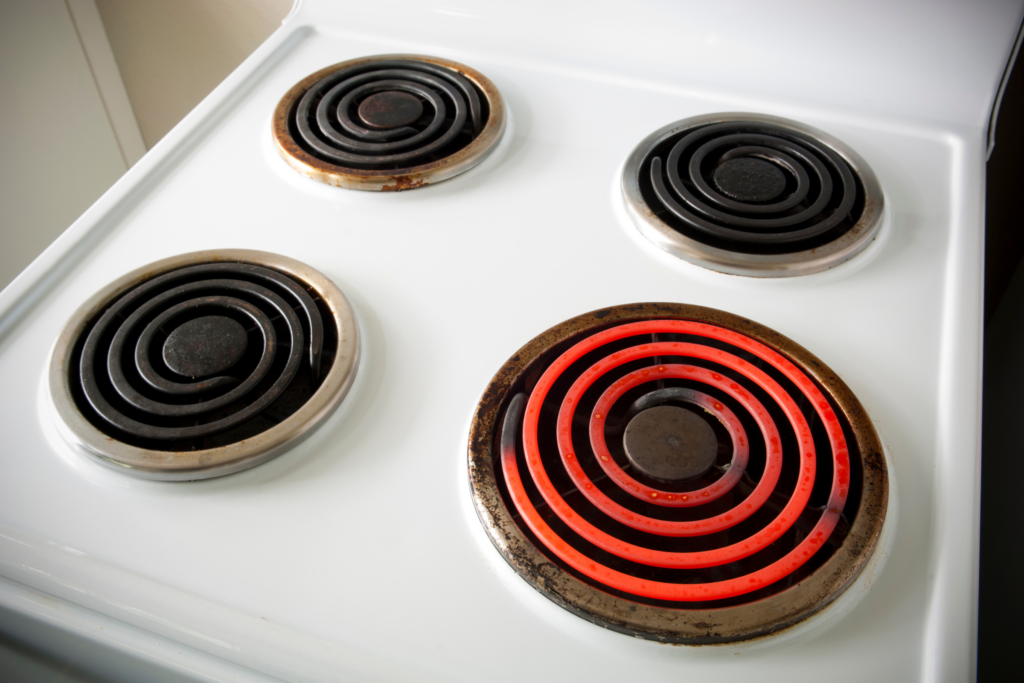
Electric coil vs glass top vs induction stove tops
Here’s a table that compares the features, pros, and cons of electric coil stovetops, glass-top stovetops, and induction cooktops:
| Feature | Electric Coil Stovetop | Glass-top Stovetop | Induction Cooktop |
|---|---|---|---|
| Heat Source | Electric coils | Electric element under glass surface | Magnetic field |
| Heat Distribution | Uneven | Even | Even |
| Responsiveness | Slow | Fast | Fast |
| Energy Efficiency | Low | Medium | High |
| Safety | Burner remains hot after use | Surface remains hot after use | Surface cools quickly |
| Cookware Compatibility | Any type | Flat-bottomed only | Magnetic-bottomed only |
| Cleaning Difficulty | High | Medium | Low |
| Price | Low | Medium | High |
Safety precautions when boiling water on an electric stove
Here are some condensed tips for using an electric stove to boil water safely and efficiently:
- Use appropriate cookware, such as heavy-bottomed pots and pans, to distribute heat evenly and reduce boiling time.
- Avoid overfilling the pot or pan to prevent potential hazards.
- Keep a safe distance between the cookware and nearby surfaces to prevent burns or damage.
- Consider using filtered water to ensure the quality of your water source.
- Stay attentive and near the stove while waiting for the water to boil.
- Turn off the stove and remove the cookware carefully using heat-resistant gloves or oven mitts.
Let Us Know How We’re Doing!
Did this expertly prepared resource answer your question?
Do you have another question about home maintenance, home improvement projects, home appliance repair, or something else?
Get more information, send in questions and keep the discussion going by contacting the I’ll Just Fix It Myself company customer service team at at 1-800-928-1490 or Email us at [email protected]
